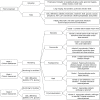Novel agents and associated toxicities of inhibitors of the pi3k/Akt/mtor pathway for the treatment of breast cancer
- PMID: 25684987
- PMCID: PMC4324342
- DOI: 10.3747/co.22.2393
Novel agents and associated toxicities of inhibitors of the pi3k/Akt/mtor pathway for the treatment of breast cancer
Abstract
The pi3k/Akt/mtor (phosphatidylinositol 3 kinase/ Akt/mammalian target of rapamycin) signalling pathway is an established driver of oncogenic activity in human malignancies. Therapeutic targeting of this pathway holds significant promise as a treatment strategy. Everolimus, an mtor inhibitor, is the first of this class of agents approved for the treatment of hormone receptor-positive, human epidermal growth factor receptor 2-negative advanced breast cancer. Everolimus has been associated with significant improvements in progression-free survival; however, it is also associated with increased toxicity related to its specific mechanism of action.
Methods: A comprehensive review of the literature conducted using a focused medline search was combined with a search of current trials at http://ClinicalTrials.gov/. Summary tables of the toxicities of the various classes of pi3k/Akt/mtor inhibitors were created. A broad group of Canadian health care professionals was assembled to review the data and to produce expert opinion and summary recommendations for possible best practices in managing the adverse events associated with these pathway inhibitors.
Results: Differing toxicities are associated with the various classes of pi3k/Akt/mtor pathway inhibitors. The most common unique adverse events observed in everolimus clinical trials in breast cancer include stomatitis (all grades: approximately 60%), noninfectious pneumonitis (15%), rash (40%), hyperglycemia (15%), and immunosuppression (40%). To minimize grades 3 and 4 toxicities and to attempt to attain optimal outcomes, effective management of those adverse events is critical. Management should be interdisciplinary and should use approaches that include education, early recognition, active intervention, and potentially prophylactic strategies.
Discussion: Everolimus likely represents the first of many complex oral targeted therapies for the treatment of breast cancer. Using this agent as a template, it is essential to establish best practices involving and integrating multiple disciplines for the management of future pi3k/Akt/mtor signalling pathway inhibitors.
Keywords: Akt; Breast cancer; adverse events; everolimus; mtor; pi3k.
Figures



References
Publication types
LinkOut - more resources
Full Text Sources
Other Literature Sources
Research Materials
Miscellaneous

